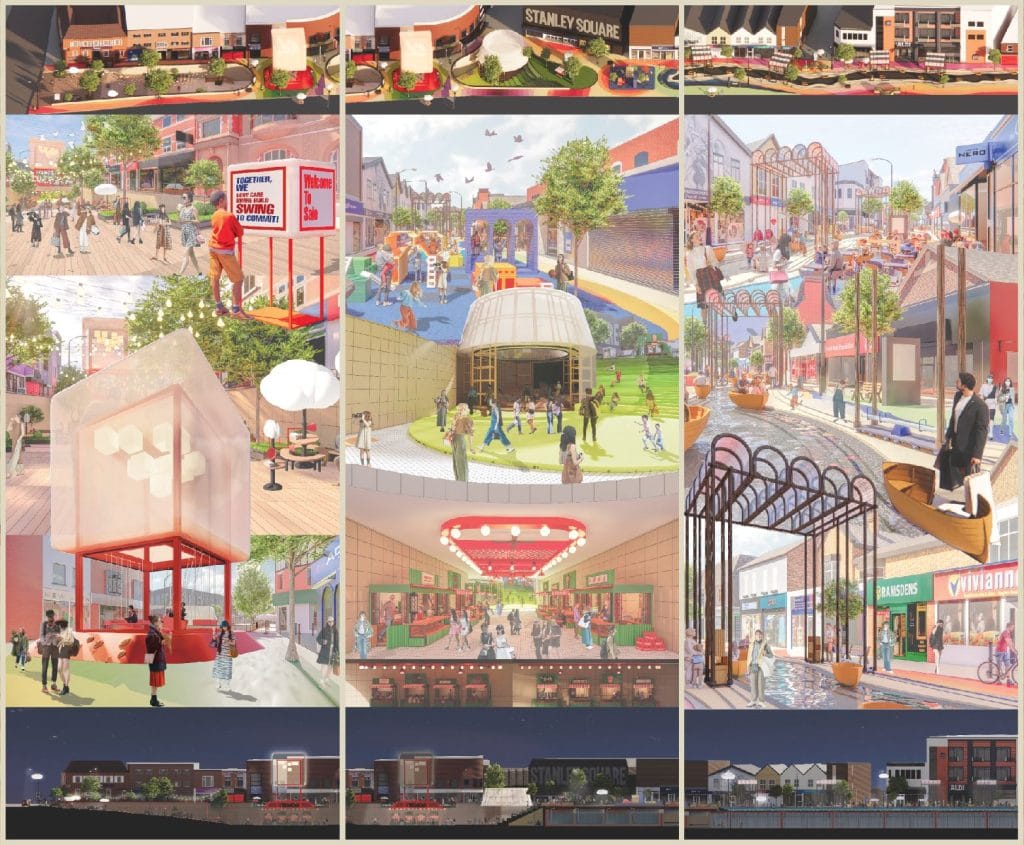Our Common Backyard: Reimagining Sale’s School Road as a Bridge Between Cultures
Urban Encounters and Cultural Care in Greater Manchester
Charlize Kam’s design thesis, “Our Common Backyard,” is not just a collection of speculative urban interventions; it’s an invitation to re-envision the possibilities of everyday public life. As she completes her Master of Architecture at the renowned Manchester School of Architecture, Charlize stands at an intersection herself—a Part II Architectural Assistant, ready to bring her dynamic cross-cultural insights to the UK professional landscape. With four years of architectural experience in Hong Kong across residential, commercial, and urban sectors, her work exemplifies the fusion of technical acumen and a sensitive social imagination.
From Hong Kong to Manchester: Designing for Belonging
The shifting tapestry of British urban life has been increasingly shaped by the arrival of Hong Kong families seeking new beginnings. Charlize’s project traces this migratory thread to Sale’s School Road in Greater Manchester, a corridor that, in her eyes, brims with latent potential for shared community life. Drawing upon her personal experience navigating the urban fabric of Hong Kong—a city known for its richly layered public spaces—Charlize approaches School Road not as a boundary, but as a “common backyard” for all.
She deftly reads the nuances of the street, noting points of possible friction between customs, languages, and everyday rituals. Rather than attempting to erase differences, her interventions curate moments of gentle overlap: playgrounds reimagined as multigenerational gathering zones, thresholds between shops and sidewalks softened to encourage spontaneous exchanges, and miniature gardens carved into the urban grid.
Celebrating the Everyday: Interventions That Care
“Our Common Backyard” resists grand architectural gestures in favour of incremental, community-focused interventions. Each proposal is elegantly understated—benches that curve to create intimate pockets for conversation, covered alcoves shielding residents from Greater Manchester’s frequent drizzle, and pavement artworks that blend motifs from both British and Hong Kong visual traditions.
Central to Charlize’s thesis is the idea of care. The street itself becomes both host and participant, encouraging acts of mutual support between long-standing locals and new arrivals. Rain gardens and permeable paving not only allude to sustainable water management—a nod to both Manchester’s weather and Hong Kong’s typhoon seasons—but become teaching spaces where ecological practices can be shared across generations and cultures.
The Public Life of Small Things
What distinguishes Charlize’s project is her attunement to what sociologist Ray Oldenburg termed “third places”—settings beyond home and work that foster informal social interactions. School Road, in her vision, becomes a string of such places: not one grand plaza, but a series of modest but meaningful interventions—picnic tables for shared meals, tactile play elements for children, and open book exchanges inspired by both British and East Asian traditions.
The cumulative effect is quietly radical. By focusing on shared routines and curiosity, “Our Common Backyard” leverages the quiet power of the everyday. Over time, the street becomes an evolving diary of encounters big and small—a place where a casual hello in Cantonese or English carries the chance of lighting a new connection.
Process, Participation, and Recognition
Charlize’s thesis draws on a collaborative methodology rooted in empathy and observation. She conducted workshops and informal interviews with recent Hong Kong immigrants and local Sale residents, gathering stories of adaptation, nostalgia, and hope. These narratives underpin her spatial strategies, ensuring that design is responsive rather than prescriptive.
The project has received commendation within the Manchester School of Architecture and has sparked conversations about how the next generation of architects can directly address issues of integration, placemaking, and care in British cities. Influences from renowned urban practitioners—Jan Gehl’s “life between buildings” and Jane Jacobs’s “eyes on the street”—are evident, yet Charlize’s own cross-cultural lens brings fresh texture to familiar theories.
Opportunities for Conversation: Connecting with Charlize Kam
With her architectural training approaching its crescendo, Charlize Kam is currently engaging with practices and collaborators across the UK. “Our Common Backyard” serves as both her portfolio centerpiece and an open call to the architectural community: How might we design for everyday encounters in a world of increasing mobility and diversity?
Those interested in discussing the project, potential professional opportunities, or conversing about public space and cross-cultural design are warmly encouraged to reach out. Charlize is keen to connect with architects, urban designers, community organisations, and anyone passionate about the social role of architecture. Reach her via LinkedIn or directly by email at charlizekam@hotmail.co.uk.
Looking Forward: Architecture as an Act of Neighbourliness
“Our Common Backyard” is a timely reminder that architecture’s most meaningful work often emerges at the level of the local, the incremental, and the shared. In a period of rapid demographic and social change, Charlize Kam’s approach models what it might look like to welcome difference, foster care, and allow the rituals of daily life to seed a more connected community.
It is an ethos that will no doubt define her next chapter as an architectural professional in the UK—and one that the broader design community can draw inspiration from as we imagine our collective urban futures.







Add a comment